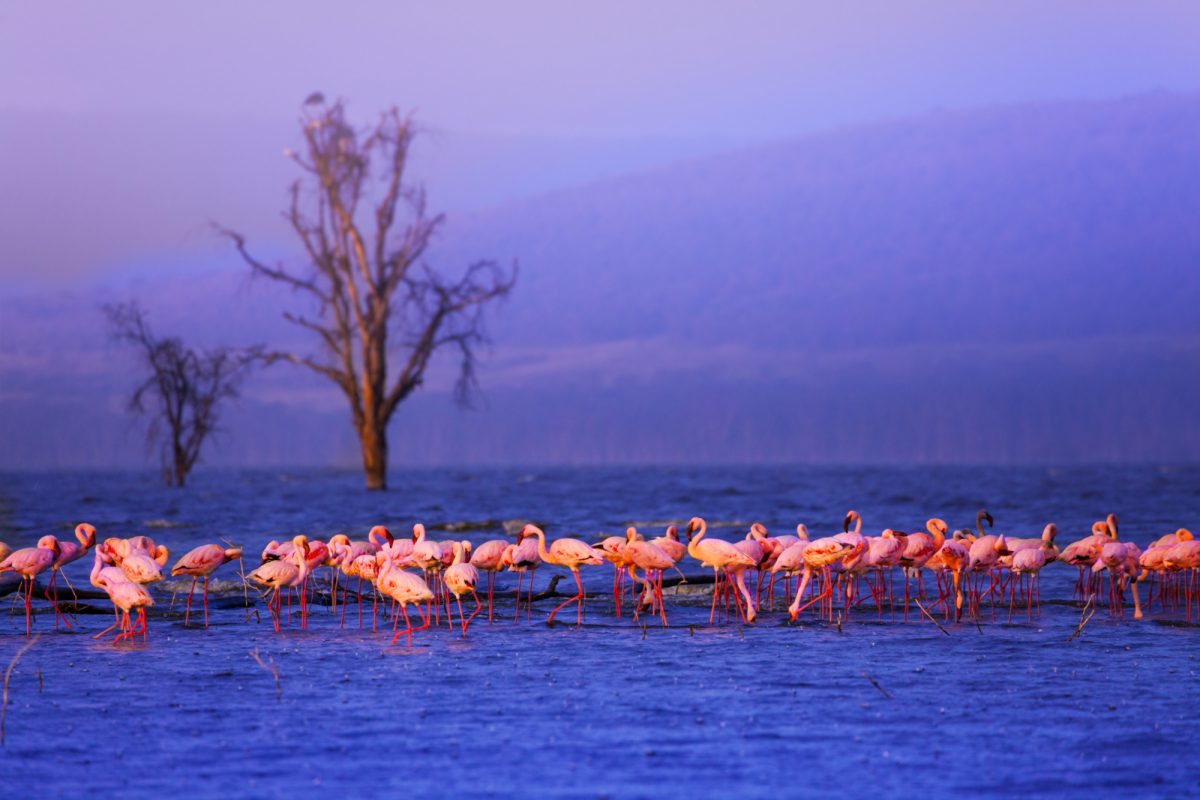
Lake Nakuru, located in Kenya, is a stunning soda lake known for its incredible biodiversity. Did you know that this lake is home to one of the largest populations of flamingos in the world? These pink beauties flock to the lake, creating a mesmerizing sea of color. But flamingos aren't the only attraction. Lake Nakuru National Park surrounds the lake, offering a sanctuary for over 450 bird species, including pelicans and cormorants. The park also shelters endangered animals like the black rhino and Rothschild giraffe. Whether you're a bird enthusiast or a wildlife lover, Lake Nakuru offers a unique glimpse into nature's wonders.
Location and Geography
Lake Nakuru, located in Kenya, is a stunning soda lake that attracts visitors from around the world. Nestled in the Great Rift Valley, it offers breathtaking views and a unique ecosystem.
- Lake Nakuru is situated in the Great Rift Valley, a geological and geographical feature stretching from Lebanon to Mozambique.
- The lake covers an area of approximately 45 square miles (118 square kilometers).
- It sits at an elevation of about 5,755 feet (1,754 meters) above sea level.
- The lake is surrounded by Lake Nakuru National Park, which spans around 73 square miles (188 square kilometers).
Wildlife and Biodiversity
The lake and its surrounding park are home to an incredible variety of wildlife, making it a prime destination for nature enthusiasts.
- Lake Nakuru is famous for its large flocks of flamingos, sometimes numbering in the millions.
- The park is home to over 450 bird species, making it a bird watcher's paradise.
- It also hosts a significant population of white and black rhinos.
- Other animals found in the park include lions, leopards, giraffes, and waterbucks.
Environmental Challenges
Despite its beauty, Lake Nakuru faces several environmental challenges that threaten its delicate ecosystem.
- Pollution from nearby urban areas has led to increased levels of contaminants in the lake.
- Deforestation in the surrounding areas has caused soil erosion, affecting the lake's water quality.
- Climate change has led to fluctuating water levels, impacting the habitat of many species.
- Invasive plant species, such as the water hyacinth, have disrupted the lake's natural balance.
Conservation Efforts
Efforts are being made to protect and preserve Lake Nakuru and its unique environment.
- The Kenyan government has implemented strict regulations to control pollution and deforestation.
- Conservation organizations are working to remove invasive species and restore native vegetation.
- Community education programs aim to raise awareness about the importance of protecting the lake.
- Ecotourism initiatives help fund conservation projects while providing sustainable income for local communities.
Historical and Cultural Significance
Lake Nakuru holds historical and cultural importance for the local people and the nation of Kenya.
- The name "Nakuru" is derived from the Maasai word "En-akuro," meaning "dusty place."
- The lake has been a vital water source for the Maasai people for centuries.
- Archaeological sites around the lake reveal evidence of early human settlements.
- The area has been a protected national park since 1961, highlighting its significance to Kenya's natural heritage.
Tourism and Activities
Lake Nakuru offers a variety of activities for visitors, making it a popular tourist destination.
- Game drives in Lake Nakuru National Park provide opportunities to see diverse wildlife up close.
- Bird watching is a major attraction, with guided tours available for enthusiasts.
- Scenic viewpoints, such as Baboon Cliff, offer panoramic views of the lake and surrounding landscape.
- Hiking trails around the park allow visitors to explore its natural beauty on foot.
Unique Features
Several unique features make Lake Nakuru stand out among other lakes in the region.
- The lake's alkaline waters create a distinctive blue-green hue.
- Algae blooms in the lake provide food for the massive flocks of flamingos.
- The lake has no outlet, meaning water levels are primarily influenced by rainfall and evaporation.
- Hot springs along the lake's shores add to its unique geological characteristics.
- The lake's shallow depth, averaging around 3 feet (1 meter), makes it particularly sensitive to environmental changes.
The Final Splash
Lake Nakuru's got a lot more going on than just being a pretty spot on the map. From its vibrant flamingo population to the diverse wildlife that calls it home, this lake's a true gem. The unique alkaline waters create a special environment that supports a variety of species, making it a must-visit for nature lovers. Plus, the surrounding national park offers a safe haven for endangered animals like the black and white rhinos. Whether you're into birdwatching, safari adventures, or just soaking up some stunning views, Lake Nakuru's got something for everyone. So next time you're planning a trip, consider adding this incredible destination to your list. You won't regret it!
Was this page helpful?
Our commitment to delivering trustworthy and engaging content is at the heart of what we do. Each fact on our site is contributed by real users like you, bringing a wealth of diverse insights and information. To ensure the highest standards of accuracy and reliability, our dedicated editors meticulously review each submission. This process guarantees that the facts we share are not only fascinating but also credible. Trust in our commitment to quality and authenticity as you explore and learn with us.


